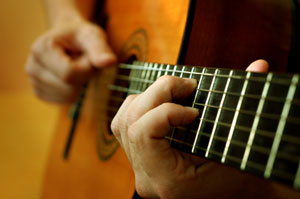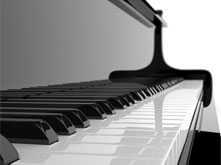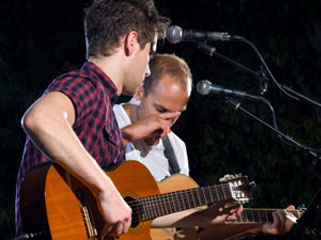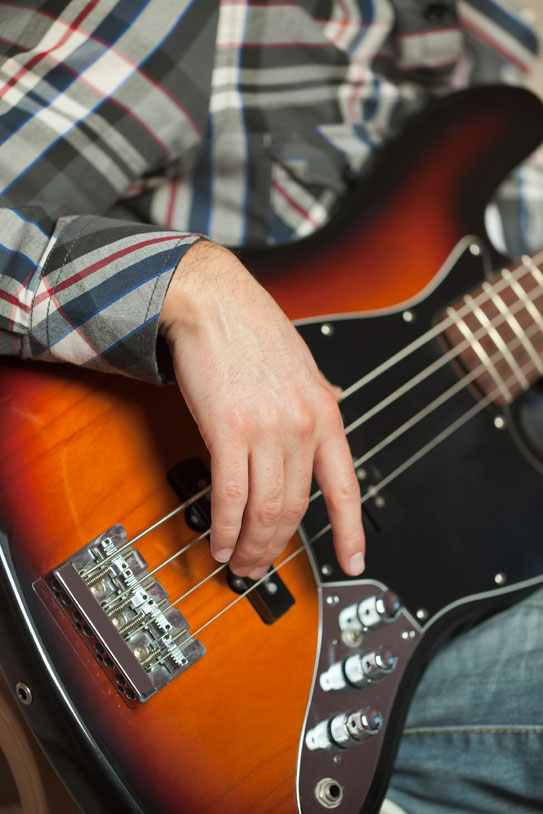
Blog
Jul 24 2015 |
Guitar Chords: Extensions And SuspensionsPosted in: Jazz Guitar Lessons Chords are constructed from roots, thirds and fifths. These intervals come from the major scale where the scale degrees produce different triads, some major and some minor (and one diminished). Guitar players add chord tones and extensions to triads by incorporating other degrees from the major scale. These added scale degrees include 2nds, 4ths, 6ths, 7ths, 9ths, 11ths and 13ths. Today’s lesson will take different degrees from a major scale and add them to triad based chords. When chord tones extend an octave above the 7th, are called extensions and numbered to mirror their position above the first seven notes of the major scale. For example, 2 becomes 9, 4 becomes 11 and 6 becomes 13. C D E F G A B C D E F G A B 1 2 3 4 5 6 7 8 9 10 11 12 13 14 It is important to know that the 1, 3, 5 and 7 are always counted the same regardless of the register. Only 2, 4 and 6 get renumbered when they extend beyond the 7th, and only get renumbered once. When an extension like 9, 11 or 13 is present in a chord, then the 7th is supposed to be included too, plus any extensions before the one in the chord name. For example, C Major– 1-3-5, C-E-G Cmaj7: 1-3-5-7, C-E-G-B Cmaj9: 1-3-5-7-9, C-E-G-B-D Cmaj11: 1-3-5-7-9-11, C-E-G-B-D-F Cmaj13: 1-3-5-7-9-11-13, C-E-G-B-D-F-A It’s pretty tough to play seven notes on a six string instrument, so we try to play the most important notes in the chord and skip the less important ones. Generally speaking, the following notes are the most important: 1) The third, because it tells the listener whether the chord is major or minor. 2) The 7th, because it tells the listener if the chord is dominant. 3) The extension, because how can you have a 13th chord without a 13th? Contrary to what you may think, the root and fifth are not very important to defining harmony. As a result, you can leave them out especially if the bassist is playing the roots. A chord you see alot is the suspended chord. There are two common types of sus chords: The suspended second (sus2) that lowers the 3rd down to the second, and the suspended fourth (sus4) which means the 3rd of the chord is raised up to the 4th . This gives the chord an unresolved or suspended sound that wants to resolve back to the third. C: 1-3-5, C-E-G Csus2: 1-2-5, C-D-G Csus4: 1-4-5, C-F-G Another type of chord that you will see is the “add” chord. For example, add9, add11 and add13. This is telling you to add the extension either on top of a power chord (root/perfect fifth) or a triad, skipping the seventh and other extensions. C: 1-3-5, C-E-G Cadd9: 1-3-5-9, C-E-G-D Cadd11: 1-3-5-11, C-E-G-F Cadd13: 1-3-5-13, C-E-G-A Because the 2nd and 9th’s interval are the same note, as well as the 4th’s and 11th’s, you may see the chords above stacked and transcribed this way also: Cadd2: 1-2-3-5, C-D-E-G Cadd4: 1-3-4-5, C-E-F-G Notice that these chords are the very same notes as the chords before them? The only difference is in how the notes are stacked and the chords name. Guitar players often stack chord members out of order anyway, so it’s hard to follow a strict convention. As a result, 2nds and 9th’s and 4th’s and 11th’s are often used interchangeably. Guitarists not only need to rearrange chord components at times but also leave out in order to make a chord shape physically playable and pleasant sounding. This is especially true as you add more chord tones and extensions. For example, a dominant 13th chord is supposed to be stacked 1-3-5-b7-9-11-13. This would be physically impossible to play on the guitar. In an instance like this, you at least try to retain the 3rd, b7th and the extension that the chord is named after. So a C13 might be played 1-3-b7-13, 1-b7-3-13. |






